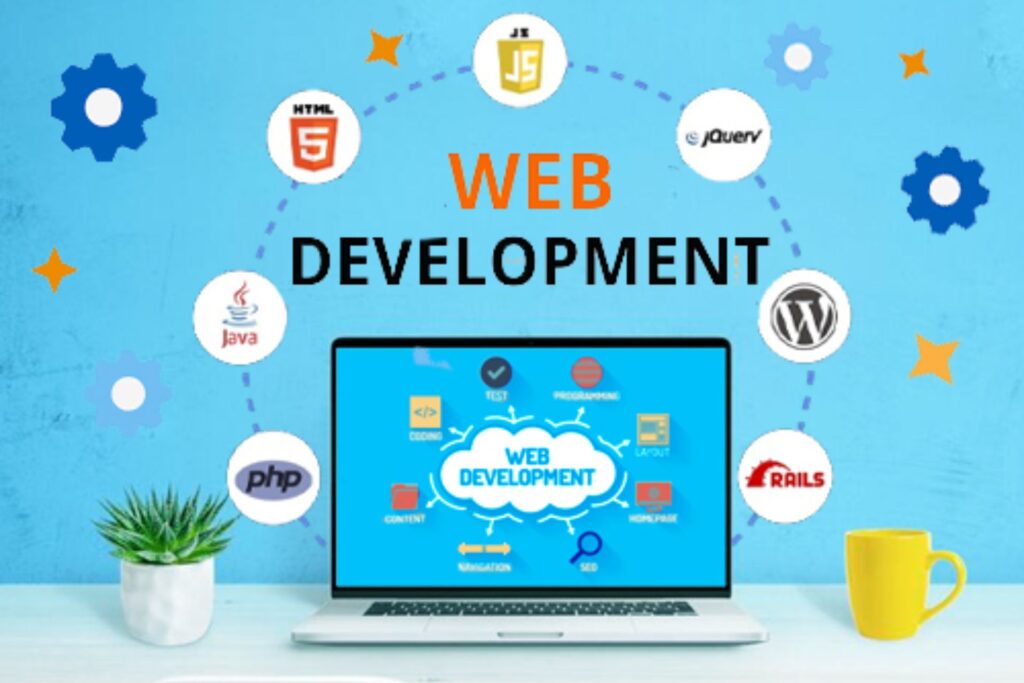
Website building is a multifaceted process that involves several stages, including planning, designing, developing, launching, and maintaining a website. In this detailed guide, we will explore the essential components and steps required to build a website, keeping the content concise yet comprehensive.
A website builder is a tool that allows users to create a website without needing to code. Website builders typically offer templates that can be customized, and some also include drag-and-drop features.
Website builders can be useful for:
- Small businesses: To establish an online presence with their brand’s content and offerings
- Marketing agencies: To quickly create a website for a client
- Users: To create a website without needing to hire a web developer
A website is a collection of digital pages interconnected through hyperlinks, designed to provide information, services, or products. Websites are accessed via web browsers using URLs and are hosted on servers. Website building involves a combination of skills, including graphic design, coding, content creation, and marketing.
What is Website Building?
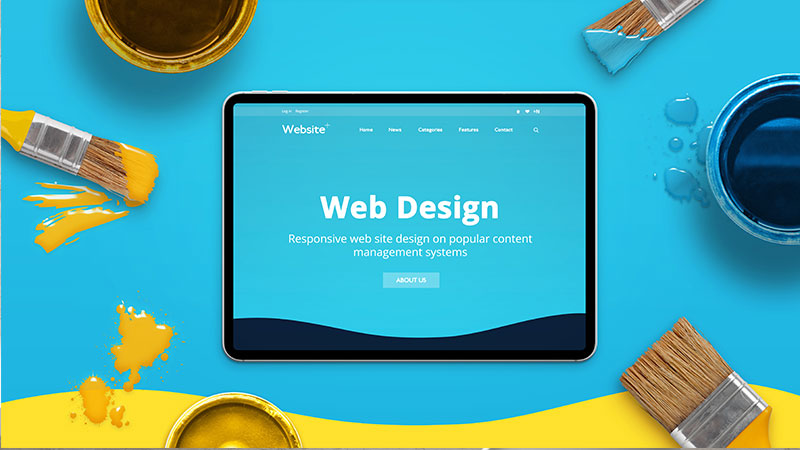
A website builder is a programme or tool that allows you to design and create websites without having to edit any code. You can do everything you need to by yourself, without needing a designer or developer. With the specially developed drag-and-drop website builder software, you can simply choose from a vast range of templates and customise them in line with your brand vision! If you want to know more about the ideology behind Website Builder, check out this interview.
A website builder is a platform that a creator or developer uses to create a website from the ground up. It typically offers templates to select from that give sites different looks, features, capabilities, and further opportunities for customization as well.
Many website builders offer a free level of access for basic website creation, plus higher-tier plans with more premium features or and add-ons, like custom domain names.
There are many, many website builders on the market today to choose from. WordPress is the most established in the industry, while Squarespace is popular with creatives. Meanwhile, Shopify serves e-commerce businesses, and Mighty Networks has features optimized for online communities and courses.
Website building is a multifaceted process that involves several stages, including planning, designing, developing, launching, and maintaining a website. In this detailed guide, we will explore the essential components and steps required to build a website, keeping the content concise yet comprehensive.
A website is a collection of digital pages interconnected through hyperlinks, designed to provide information, services, or products. Websites are accessed via web browsers using URLs and are hosted on servers. Website building involves a combination of skills, including graphic design, coding, content creation, and marketing.
What does it cost to build a website?
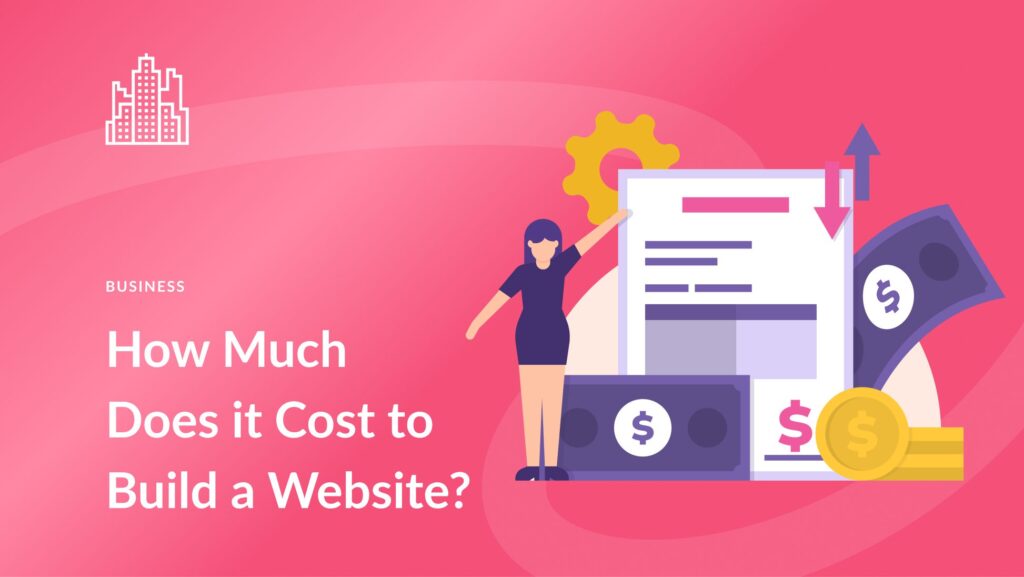
Developer-designed custom websites are definitely pricey. But even if you choose to utilize a website builder, some brands are more expensive than others. To give you an idea, we’ve listed the pricing of the most popular website builders below.
WordPress
We’ve found that typical pricing for bespoke WordPress design and development starts at $15,000 and goes up to $50,000. From there, you’ll have to plan a bit more to access ongoing development and maintenance for the site, like maintenance and bug fixes, as well as new feature development. These recurring costs tend to run between $5,000 and $12,500 each month.
Wix
Pricing for a Wix depends on whether you’re building a personal site, a business site, or an ecommerce site. And while Wix is somewhat light on features, all of its plans are pretty affordable: no matter the tier, expect to pay a maximum of $50 per month. Users who need more than that can explore the option for a custom priced, enterprise solution.
Squarespace
Squarespace is another affordable option in the website builder space. Overall, the site is a little more robust than Wix, and much more aesthetically pleasing. Similarly, you’ll pay at max around $50 per month for an e-commerce website, but you’ll have to pay more for add-ons—think community capabilities or online courses— outside of Squarespace
Mighty Networks
Mighty Networks is an online community builder that comes with membership, subscriptions, events, and courses in mind. At its most basic level, you’ll be able to build your membership website for free with features like direct messaging, personalized activity feeds, dynamic articles, and more.
For more advanced features—like paid groups and course functionality— users can also utilize Mighty Network’s premium plans. These plans cost less than a developer, deliver robust results at less than $100 a month, and let users charge for a fee for access.
Is building a website difficult?

Website builders like Wix, Squarespace, WordPress, and Mighty Networks make it very simple to start building a website, even for those with minimal website design experience. Most offer templates that can be modified and personalized, as well as basic features that align with the goals of a website. For an additional fee, creators can add on features to their site, like forums, customized domain names, or an exclusive members area for membership sites.
Website builders often offer these free plans to get a basic website up and running. But if your needs are more complex, you’ll likely need the help of a developer or expert to achieve the functional and aesthetic results you want.
Some platforms, however, are more specifically tailored to certain functionalities. Website builders like Squarespace and Mighty Networks, for example, eliminate the need to hire a developer to create and maintain a website by offering elegant, customizable features: SquareSpace makes the process of building a portfolio streamlined and easy, while Mighty Networks takes the hard work out of building a robust online community from scratch.
Essential Tools and Technologies

Front-End Development
The front end is the part of the website users interact with:
- HTML (HyperText Markup Language): The structure of the web pages.
- CSS (Cascading Style Sheets): Styling the web pages.
- JavaScript: Adding interactivity and functionality.
Back-End Development
The back end handles server-side operations:
- Programming languages: Python, PHP, Ruby, Node.js, etc.
- Databases: MySQL, PostgreSQL, MongoDB, etc.
- Frameworks: Django, Laravel, Express.js, etc.
Content Management Systems (CMS)
For non-technical users, CMS platforms simplify website building:
- WordPress: Ideal for blogs and business sites.
- Shopify: Perfect for e-commerce.
- Wix or Squarespace: Easy-to-use drag-and-drop builders.
Planning Your Website
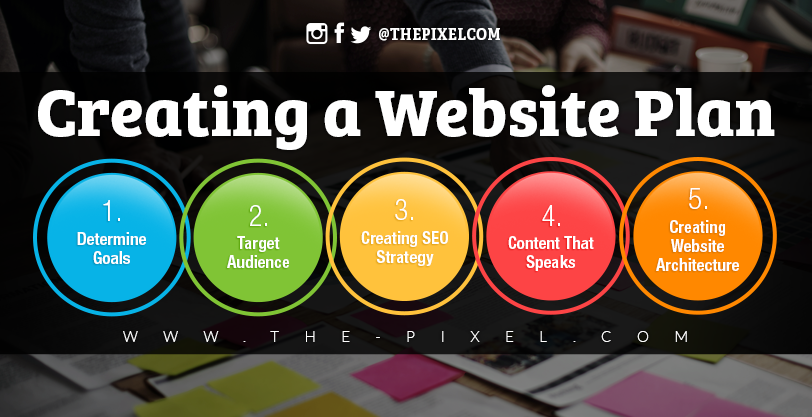
Define Your Goals
- What is the purpose of your website?
- Who is your target audience?
Create a Sitemap
A sitemap outlines the structure of your website:
- Homepage
- About Us
- Services/Products
- Blog/Resources
- Contact Us
Decide on Features
Depending on the type of website, features may include:
- Search functionality
- Contact forms
- Payment gateways
- User registration and login systems
Designing the Website

User-Centered Design
Focus on delivering a seamless user experience (UX). Ensure:
- Easy navigation
- Fast loading times
- Mobile responsiveness
- Accessibility for all users
Visual Design
Choose a theme or create a unique design using:
- Color schemes: Reflect your brand identity.
- Typography: Use clear and legible fonts.
- Imagery: High-quality images and videos enhance engagement.
Wireframes and Prototypes
- Create wireframes to sketch the layout of your pages.
- Use prototyping tools like Adobe XD or Figma to visualize the design.
Advantages of Website Building

- Runs on any OS: It’s programmed to run on any OS . It must appropriately adapt to iOS, Android, and Windows Phone — amongst other operating systems.
- Runs using easy URL: These apps run on the device’s own browser through an easy URL.
- Need not be downloaded: They don’t got to be downloaded and installed from app stores like Google Play or Apple’s App Store. This translates into money-saving since having an immediate link through an internet app is free.
- Need not be updated like apps: They may also open websites. This suggests that they don’t require to be updated within the way common apps do.
- Cost Efficient: The most important benefit you’ll draw faraway from its price. Web app development is that the cheaper quiet app development. It consists of making a link or several links between the appliance and an URL. Developing a native app or an interpreted app entails a better cost but its chances to succeed are far greater.
Disadvantages of Website Building
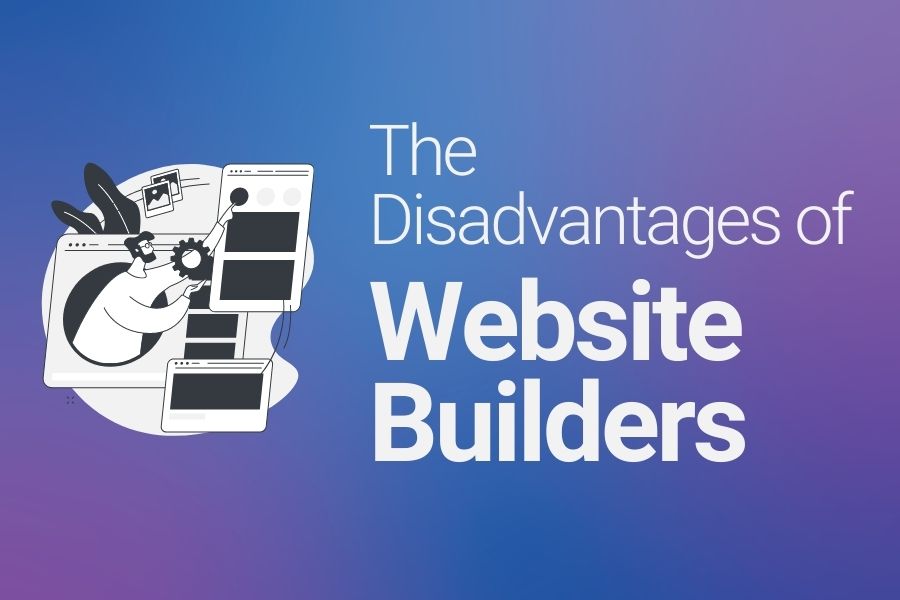
- Creates problem if website is not responsive: The website responsiveness means the website data displays on every platform and every size of screens correctly.
- If your website undergoes any quite issue, your application are going to be in trouble too. Don’t assume that your web app will work perfectly if you don’t have a top quality corporate website. For instance, if the web site’s URL takes a while to load or if uncomfortable ‘cookies’ show up when entering the website, accessing it through the appliance will entail an equivalent issues. The matter isn’t inherent to your web app. It’s rather located within the website’s development.
- Internet connection is compulsory: An Internet connection are going to be an absolute must run it. Otherwise, you’ll not be ready to browse the website.
- It will also lose visibility because it won’t get on display within the stores.
- In addition, there’ll be some access restrictions on certain hardware features of the device it’s running on.
Limitations of Website Building

1. No Uniqueness
DIY platforms have generic website templates. In other words, all websites built by using these templates will have the same navigation structure, layout, and styles. Entrepreneurs have limited ability to alter the design to make their websites unique.
Such a similar website cannot stand out from the crowd and get failed to build your brand over the period. Branding needs a tremendous amount of customization regularly, which is impossible in the websites built by using DIY website builders.
2. Poor SEO
Search Engine Optimization (SEO) is essential for increasing the website’s visibility and higher ranking on SERPs (Search Engine Result Pages).
Unfortunately, DIY website builders fail to offer strong SEO capabilities to business websites. Most DIY website builders do not allow Google to verify the respective website in their Webmaster Tools, which can hurt its search rankings badly.
What’s more, most of such websites do not integrate with Google Analytics, and you may not get the important data related to the performance of your website.
3. Not Responsive
It is necessary for your business website to have a responsive design to ensure a good mobile experience.
These days, mobile devices cover over 50% of all web traffic globally, and therefore, your website should be ready for mobiles and tablets. With responsive design, your website gets ready as per the size and dimensions of various screens. It also contributes to improving search rankings because Google also prioritizes websites with responsive designs.
Most DIY websites are not responsive and give a poor performance on search engines.
4. Minimal Support
Your website has many components for ensuring proper functionality. If you fail to take care of these components, they may lead the business website to malfunction. Some of the issues that occur because of this include-
- Visitors/users receive error messages on certain pages
- Website faces downtime
- Web pages take more time to load
- Various elements stop functioning
All such technical glitches need technical assistance in real-time, but DIY website builders provide very limited customer support and your website may remain down for a longer time.
5. No Ownership
This is one of the biggest disadvantages of DIY websites. Often, you cannot get ownership of the website you have built using a DIY website builder.
In many instances, the website builder may own the design and even content for your website. If you stop paying for their services, you may not use these assets.
As a result, you may have to build another website from scratch. Also, you cannot migrate the website to another server when it is created by a DIY builder.
6. Performance Issues
DIY website builders use outdated code at times to save costs and keep the web development process easy for all. However, this can lead to website performance issues including slow website speed, lack of security, and navigation limitations.
Your target audience finds it difficult to navigate such websites and their requirements may not get fulfilled. Such a poor user experience can drive the potential web traffic away from the website.
7. Reduces Value
If your website looks similar to many other websites in content, display, or features then customers or visitors will know that you are using a cheap builder to create your business website.
It certainly devalues your business and diminishes your brand identity. When you opt for a cheap route with your website, you will always get cheap results.
8. Single-page Development
Most website builders enable you to make a single web page, which is not useful for SEO campaigns or creating an online buzz.
Your business website should have multiple pages and it should keep on growing. It is the most effective way to bring Google bots repetitively while keeping your website relevant for the target audience.
A single-page website does not serve any business objective effectively, and therefore, your company may not get any benefit from it.
9. Non-CMS Website
CMS systems are powerful and necessary tools that help us manage websites and content.
For example, WordPress is a robust CMS that facilitates writing, organizing, editing, and publishing content online for the business website. CMS offers full control over the design, documents, and display of the unique content.
However, a website builder enables you to create a static web page based on HTML, which is not compatible with any content management systems.
10. Slow Speed
A slow website is a really bad news for sales and search engine rankings.
As per the Hubspot study, the change in a website bounce rate spikes to 100% when a page takes 4 seconds or more to load. Now, website builders offer common servers to all their clients, which creates fewer resources for websites.
As a result, the website’s speed reduces significantly and visitors avoid such websites in the long run.
11. Advertisement Issues
This is another big disadvantage you need to consider when you make a website by using such DIY builders. Your business website may display a large advertisement.
It not only affects your brand value but also spoils the user experience. It instantly indicates that the website owner has not taken enough care in building a real website. As a result, people prefer to stay away from such websites and you experience a reduction in web traffic over the period.
12. Domain Name
As mentioned above, you do not own your website completely when it is built using a website builder. You do not even get a specific domain name for your website as well.
Most website builders will give a combined URL, which is worthless. People lose trust in a website with such a long domain name and tend to avoid contacting you.
Principles of Website Building

- Layout: The arrangement of elements on a page, including headers, footers, and columns.
- Colour: Using colour enhances branding, draws attention, and evokes emotions.
- Typography: The style and appearance of text, including font choice and size, affect readability and mood.
- Imagery and Graphics: Visual elements like photos, icons, and illustrations that add context and appeal.
- Navigation: The system allows users to move around the website easily and intuitively.
- Content: The text, images, videos, and other media convey the site’s message and information.
- Functionality: The interactive features of a site, from simple forms to complex applications.
- Performance: How quickly and smoothly the site loads and operates.
- Accessibility: The design’s ability to be used by as many people as possible, including those with disabilities.
What can I do with a website builder?
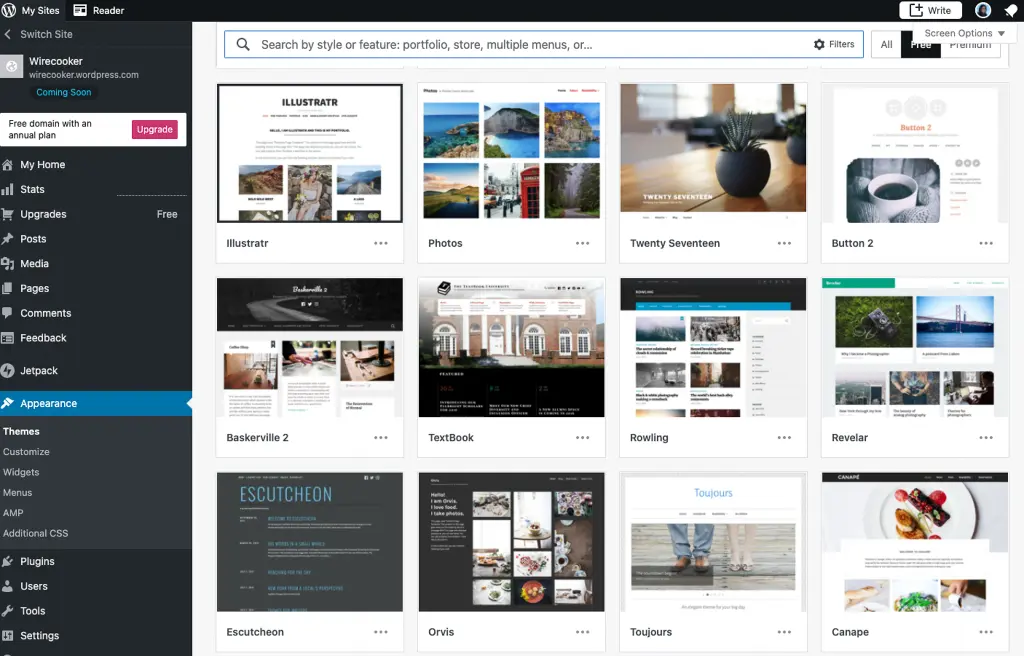
A website builder is a great way to get started on enhancing your online presence. You can do anything from creating a blog to setting up an online store. Everything is left to your imagination. They are particularly ideal for small businesses, freelancers and personal websites.
Some suggestions on which types of businesses or freelancers which would benefit from the website builder are:
- Artists
- Bloggers
- Photographers
- Musicians
- Writers
- Florists
- Other small businesses
Advanced Features

1. Search Engine Optimization (SEO)
Improve your website’s visibility by:
- Using relevant keywords in your content.
- Creating meta descriptions and alt tags.
- Building backlinks.
2. E-Commerce Features
For online stores, include:
- Secure payment gateways.
- Shopping cart functionality.
- Order tracking systems.
3. Scalability
Plan for growth by ensuring your website can handle increased traffic:
- Use Content Delivery Networks (CDNs).
- Implement database optimization techniques.
Conclusion

Building a website is a crucial step toward establishing a digital presence, whether for personal, professional, or business purposes. It involves strategic planning, thoughtful design, and technical implementation to ensure a seamless and engaging user experience. From defining objectives and identifying the target audience to selecting the right platform and optimizing for search engines, each phase plays a critical role in the site’s success.
A well-built website serves as a hub for information, communication, and brand representation. Modern websites are expected to be responsive, visually appealing, and accessible on various devices. Additionally, incorporating features such as user-friendly navigation, fast loading times, and secure functionality enhances trust and usability. Regular updates and maintenance are essential to keep the site relevant and functional.
In conclusion, building a website is not just about creating a digital space but crafting an effective tool to meet your goals, connect with audiences, and adapt to the evolving digital landscape. Whether you aim to showcase your portfolio, sell products, or share valuable content, a thoughtfully designed website can make a lasting impact and drive meaningful engagement. The process requires creativity, technical skills, and continuous optimization to achieve long-term success.
